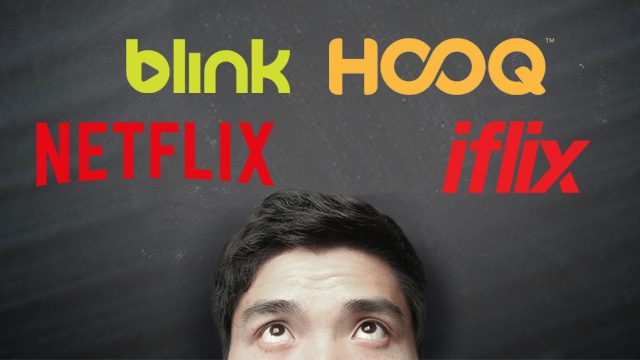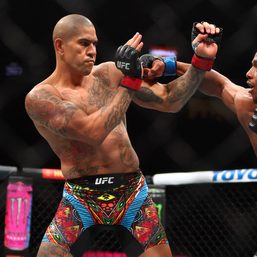SUMMARY
This is AI generated summarization, which may have errors. For context, always refer to the full article.

My Australian friend’s 6-year-old doesn’t understand TV.
She doesn’t really get why it seems to only show “random things,” instead of allowing its viewers to choose what they want to see. There’s no search bar, no related videos, no comments, no ratings.
She was born into a world, you see, where Youtube and Netflix are the rule instead of the exception, where actively searching for videos has replaced passively mashing the remote, and this dumb old box, well, it just doesn’t entertain as well as it used to.
It may not be true for everyone, but it certainly feels true amongst kids who were raised elsewhere. In the Philippines, as in most of the developing world, TV continues to enjoy its domination of the medium, no matter what Youtube growth statistics may tell you.
It’s both an Internet penetration problem and, obviously, an economic one: TV is free, Netflix isn’t.
But now that Netflix has debuted in the Philippines (amongst 130 other countries), that theory will truly be tested. The streaming giant’s absence was a window of opportunity for regional players, and in the past year we’ve seen three such video services make aggressive moves into the Philippine market: Hooq, iFlix, and Blink.
All three are inevitably backed by large Philippine corporations (Globe, PLDT, SM/SolarTV, respectively). I spent the last two months bouncing between all four of these services, and assessing their respective approaches relative to their pedigree has been a truly riveting exercise.
Blink and you’ll miss it
Of the four services, Blink is the biggest straggler. Their press release from August 2015 claimed that their service would allow viewers to “cavort with Tom Cruise,” “go wild with Mad Men,” or “run for your life from velociraptors,” and although I went through their entire catalogue I couldn’t find evidence of Cruise, John Hamm, or Sam Neill anywhere.
Their library is mostly composed of ABC shows (the middling Agents of SHIELD, the seminal procedural Criminal Minds, the sci-fi ensemble classic Lost) and a truly odd smattering of Disney movies (Iron Man 1 & 2, Crazy Beautiful, Scary Movie 4). Perhaps because it’s doesn’t appear to have a deal with a local ISP, I found that it displayed video at a really mediocre bitrate and often couldn’t sustain a steady stream, even on a 50mbps DSL connection.
If any of the shows or movies in the Blink catalogue are of interest to you, then the iFlix service is unequivocally the better deal. It has the same selection from ABC/Disney, and only costs P129 ($3) per month. Blink charges twice that – P250 ($6) for a far smaller selection – so if being able to watch old episodes of Castle is your main point of comparison, then there’s no arguing which service you would want to go with.
Channel-surfing
It’s only when you compare iFlix with its rival Hooq that the decision becomes slightly trickier. Both have licensed the ABC Studios On Demand library and are very similarly priced – Hooq is only P20 more expensive at P149 a month.
The way the differences break down are downright bewildering. Where Hooq has Mad Men, iFlix has Homeland. They both have all 7 seasons of Lost, but only Hooq has episodes from the other JJ Abrams-produced shows Alias and Fringe. Hooq also has my all-time favorite TV show, The Shield, but iFlix seems stronger for TV shows overall, with Orphan Black, Doctor Who, The Americans, Hannibal, and Sherlock, rounding out their collection.
The two services have each managed to acquire some new high-profile TV exclusively: iFlix has the must-watch Fargo, Hooq has Supergirl and the cult classic Ash vs Evil Dead.
The biggest headscratcher: Hooq has Castle seasons 1 through 3, while iFlix has seasons 6 and 7. Why neither of them were able to acquire seasons 4 and 5 is a mystery. (And in case you were wondering, Blink only has season 7.)
On the movie side of things, the differences only get wider. iFlix has a handful of the Star Trek movies, the complete Matrix trilogy, the complete Lord of the Rings, and two of the Harry Potter series, while Hooq has critically-acclaimed films like Das Boot, Taxi Driver, Pulp Fiction, Boogie Nights, The Social Network.
Neither of the two have much in the way of documentaries, which is one of Netflix’s biggest strengths.
The elephant in the screening room
The Los Gatos-based company’s arrival changes the game for the regional players significantly. (READ: 93% of Netflix US titles not available on Netflix PH – Report)
It’s pricey – even its basic plan is nearly 3 times more expensive than Hooq or iFlix – but it has some of the best original TV of 2015 in its collection (Narcos, Bloodline, Daredevil, Jessica Jones, Unbreakable Kimmy Schmidt, Orange is the New Black), and a truly vast collection of feature films and documentaries.
It has nearly 70 million subscribers around the world, and single-handedly accounts for 37% of the entire North American continent’s internet bandwidth usage. (It doesn’t have a single episode of Castle, interestingly enough.)
Hooq and iFlix do have a couple of advantages over their $50B rival though. First, they both bill their customers through their telco partnerships, so there’s no credit card dependency in their business models. Second, they also both focus on acquiring local content, something which Netflix is unlikely to put any effort into.
What’s truly interesting is that we’ve seen this movie before.
Back in 2013, GrabTaxi and EasyTaxi were two rival taxi-hailing services fighting for a foothold in the Philippine market. The two competitors were similarly aligned with telcos (Globe and Smart, respectively), and the marketing campaigns were fierce.
Then Uber showed up, expanding its massive international ride-sharing footprint with huge driver and passenger subsidies. In a year’s time, the less spry EasyTaxi was relegated to a footnote, and only GrabTaxi remained. Counterintuitively, Uber continued to enjoy a dominant position even though it was completely dependent on credit card payments.
It seems probable that we’ll see this same scenario play out in the video-streaming arena. Based on the level of competition, we’ll likely only have two services left by the end of 2016 – it just doesn’t seem possible to have three significant players in such a nascent market. Precisely which two services it will be, well, that’s the cliffhanger. – Rappler.com
When not working on his fintech startup, Luis reviews new TV pilots available on Netflix, Hooq, iFlix, and elsewhere every week at Pilotfishing.org.
Man thinking image from Shutterstock
Add a comment
How does this make you feel?





There are no comments yet. Add your comment to start the conversation.